Bead kits for jewelry: what should they contain?
Now, I’m aiming to answer a question posed by a reader who wants to start selling bead kits. Although I’ll be looking at how to put kits together, I will also be sharing places where you can buy a bead kit. And, if you are a potential buyer, you may find it helpful to know this information. After all, if you’re new to buying bead kits for jewelry, what should you expect them to contain?
What are bead kits?
If you’re new to all of this, then this is probably the first question to be asking. What is a bead kit?
Now, as with all areas of beading and jewelry-making, there is no one definitive answer. My personal view is that a bead kit should be giving the customer all the materials and instructions they need for making a specific project.
That sounds pretty obvious, right?
But, notice, I haven’t mentioned anything about tools. So, should your bead kit also contain the tools that the customer is going to need?
And, ‘materials’ can be pretty broad. Obviously, the kit should contain all the beads that will be needed. But what about beading thread? This is a common material that is used across many projects. So, is it reasonable to assume that the customer will already have their own thread? Does the customer in fact want to get a reel of thread with every kit?
Now, when you’re talking about the beads, what quantities should you be including? Obviously, enough to make the project. But, will you be counting out your beads to give the exact number required? Or will you be including ‘standard sized’ packets?
So, we’ve suddenly gone from a simple idea to a host of questions that you need to think about.
If you’re the seller, then you need to decide what you’re going to do in each of these areas.
If you’re the potential customer, then what does that mean for you? I’ll answer that at the end.
First, let’s take a look at how and why you, as a seller, can make the decisions I’ve just been talking about.
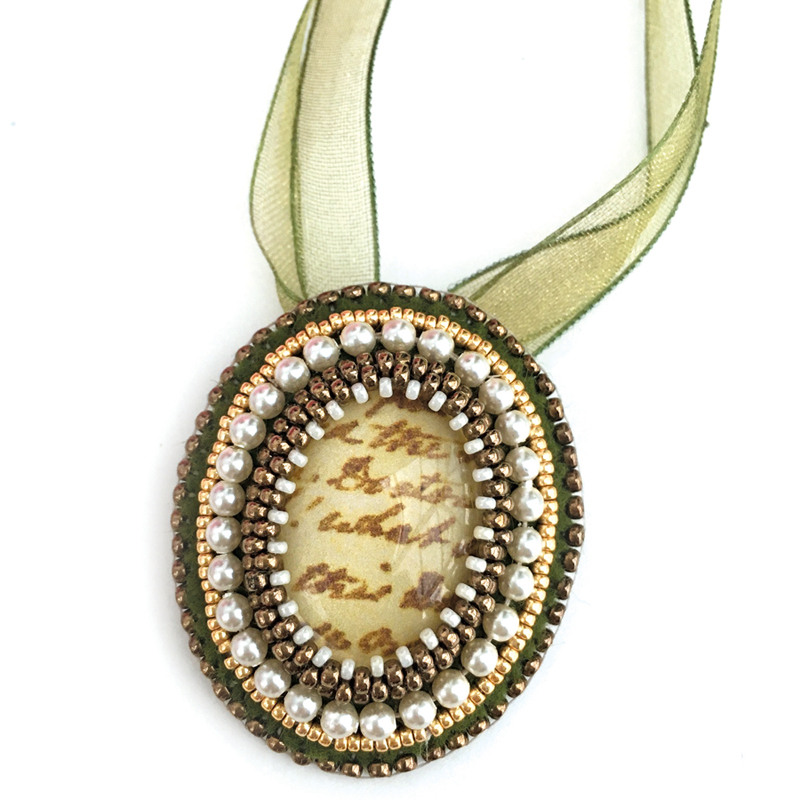
Click here to view these Jane Austen pendant beading kits for jewelry
What should bead kits for jewelry contain?
Well, as we’ve just been discussing, there isn’t a set list to answer that question. So, you, as a seller, get to choose what you put in your beading kits.
Materials
This is pretty obvious, right? You need to include any of the following materials that might apply to the project:
- beads
- clasp or findings (for jewelry)
- thread or other stringing material
- any other materials the project requires, e.g. backing for bead embroidery projects, stem tape and embroidery floss for French beading projects
But, what quantities do you include?
I have met people who literally count out the exact number of beads of each type to put into their kit. I have also met people who just include a standard pack size, e.g. a 7.2g tube of Delicas, even though the project might only need 5g.
So, which approach is better?
To my mind, including JUST the precise number of beads is a bit risky. For example, if your project needs 10 pearls, it’s easy enough to count those out. But what if the customer accidentally drops a pearl while they’re working and can’t find it again? Or what if one of the pearls proves to be defective in some way and you didn’t notice that as you packed up your kit?
Personally, I would always aim to include a few extras when it comes to the beads.
However, including an excessive quantity of beads can also be annoying. When you come to price your kit (we’ll talk about that later), you’re going to be charging the customer for these materials. So, ask yourself… does the customer want to pay for twice the number of beads that they’re actually going to be using?
Hold that thought for now. I’ll be talking more about this area when we get on to how you price your kits.
Should you include thread?
Now you’re going to get a lot of different answers to that question. Some kits include beading thread. Some don’t.
If your kit is designed for a complete beginner, then I would say it is reasonable to expect that it should include thread. This may be the first time that person has ever done any beading. So, they won’t expect to have to buy thread or other materials in addition to their kit.
However, if you’re selling bead kits for jewelry aimed at experienced beaders, then I would suggest you don’t include thread. By the time they are experienced, most beaders have a lot of thread in their stash. They have also developed a personal preference for the type of thread they want to use.
So, unless it is vital that your project is made with a very specific type of thread, I would suggest leaving it out. That way, the customer isn’t paying for something they simply don’t need.
Should you include tools?
Again, this depends on what the tools are, and who your intended customer is.
Beading kits for projects using bead-weaving techniques will usually just require a beading needle and thread. A beading mat would also be helpful.
Anyone who has done any beading before probably has these tools already. So, you don’t want to be buying (and paying for) a needle, scissors, pliers, beading mat, magnifier, etc, every time you buy a kit.
But what about beginners?
As with the thread, a complete beginner may not have tools already. However, I would still not include tools in my kits, but rather, include some recommended suppliers for the basic tools.
Some people choose to include a beading needle in each kit. Personally, I don’t do this as I am also concerned for safety. If you are including a beading needle, make sure you package it very carefully so that it can’t fall out, and nobody can accidentally stab themselves on it.
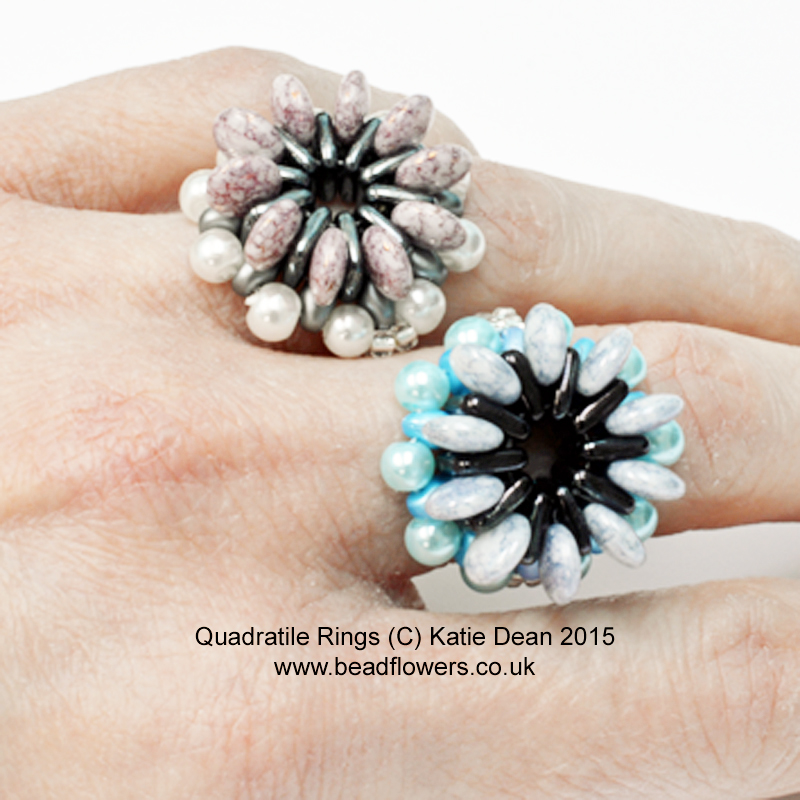
Instructions
Now, you might assume that your kit should include instructions for making the project.
However, this isn’t always the case. It is possible to sell beading kits for jewelry as a ‘materials only’ kit. So, the customer would be asked to purchase the pattern separately.
Why would you do this?
Well, sometimes people want to make more than one piece of jewelry. But they don’t want to be paying for instructions that they already have.
Personally, I like to offer a choice. So, when I sell my kits, I have the option of buying ‘materials only’ or ‘materials and pattern’. That’s just something for you to consider.
How do you price your beading kits for jewelry?
I’ve got another post in this section of the website that goes into more details about pricing your goods. So, you should also check that out.
But the basic pricing formula for beading kits is as follows:
Cost of materials (and instructions) in the kit + Cost of the time you spend putting the kit together + Cost of packaging + Mark-up
Now, most people forget about the cost of time and the cost of packaging. And even fewer add on the mark-up which is there to cover general business costs, like administration cost, marketing, advertising, web-hosting, etc.
If you want to know more about the mark-up, then please take a look at the more general posts on pricing.
How do you account for your time?
Remember how I asked you to hold onto the question of what quantity of beads to include? Well, that’s because the cost associated with that quantity is two-fold.
- Cost of the beads
- Cost of your time in sorting them out
So, you need to think about how long it would take you to count – or weigh – individual beads versus how long it would take to just pop in a ready-packaged tube.
It may seem excessive to be charging someone for a 7.2g tube of Delicas when they’re only going to need to use 5g. But if you take into account the length of time it takes you to weigh out and package up 5g yourself, then does the cost of your time actually end up being more than the cost of that additional 2.2g of beads?
Something to think about…
But, if you’re feeling guilty about charging (properly!) for your time, then don’t. Think about all that you’re saving the customer in terms of hassle and their time in finding the different components for the project. If you don’t believe me, I’ve spelled it out below…
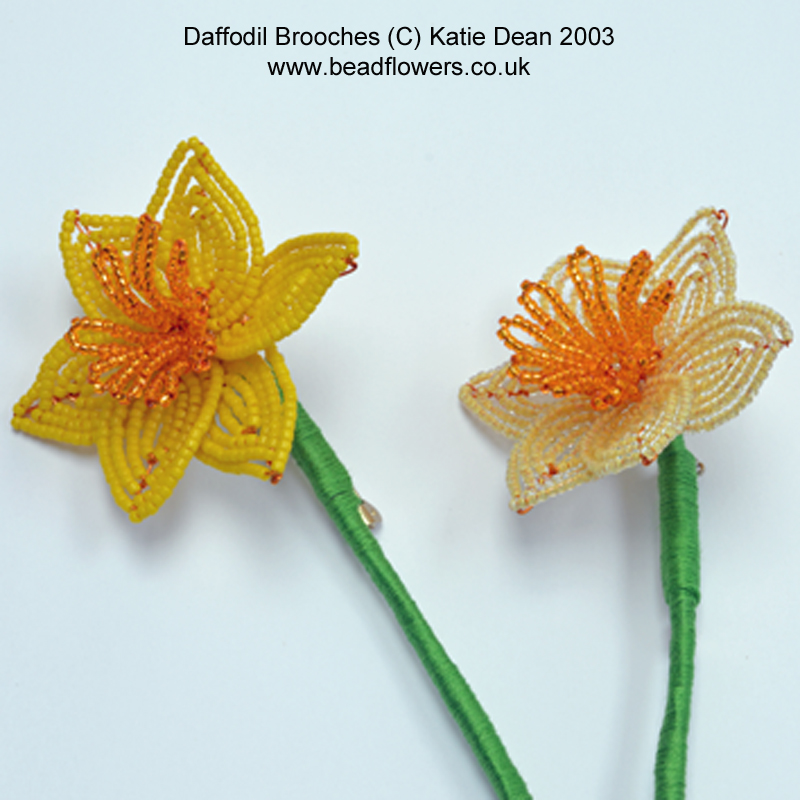
What does this mean for you as a customer?
If you’re here because you’re looking to buy bead kits for jewelry, then what does all this mean for you?
Hopefully, this has given you an insight into what goes into a beading kit. But, you’ve probably also noticed that there’s no such thing as ‘standard’.
So, when you are buying a kit, make sure you read the detailed product information before you buy. This should tell you exactly what is included in the kit (sellers, please note!). And it should also tell you what additional tools you will need.
You’ve just seen that not all kits include tools or standard items like thread. Some won’t even include the instructions. So, make sure you don’t get any nasty surprises when you receive the kit.
The second question to ask yourself is this… Are beading kits the best option for me?
You see, in a kit, you’re not just paying for beads, you’re also paying someone else to save you time and effort. You could most likely just buy the instructions for a project. Then find the beads yourself. But this requires you to hunt through bead shops. Perhaps also to pay shipping or customs charges. And, if you can’t find everything in one shop, then you might be paying multiple shipping charges.
Now, if you’re a beginner, it’s definitely worth letting someone else do the work for you. But yes, this does mean you’ll be paying a lot for that.
As you get more and more beads in your stash, you may find you already have some of the materials you’ll need. So, in that instance, is it worth paying someone else to provide you with the kit?
Just some food for thought…
Check out this link if you want some bead kits for jewelry and non-jewelry projects
To summarise…
Bead kits for jewelry – or any other type of project – are great for buyers and great for sellers.
Sellers, think carefully about what you put in your kit. Your choices will be based upon who the kit is intended for (beginner or more experienced). Whatever you decide, make sure you provide detailed information when you sell your kit. Tell the customer exactly what the kit contains and what they will need to provide for themselves. Offer help with finding items that they will need to source on their own.
Also, make sure you calculate the cost correctly, including the time you spend putting the kit together, and something to cover your business overheads.
If you don’t do this, you’re not only cheating yourself, you’re affecting other businesses who are charging a fair price for their beading kits.
Customers, make sure you read the product description before you buy your beading kits. That way, you won’t get any nasty surprises when they arrive.
Also, bear in mind, you aren’t just paying for the beads for a project. You’re also paying someone else for their time in getting those beads together for you and packaging and shipping them in a way that is convenient. Buying a kit isn’t just about getting the right beads, it’s also about saving yourself a lot of time and hassle.
If you want more top beading tips delivered to your inbox weekly, click here to join my mailing list.

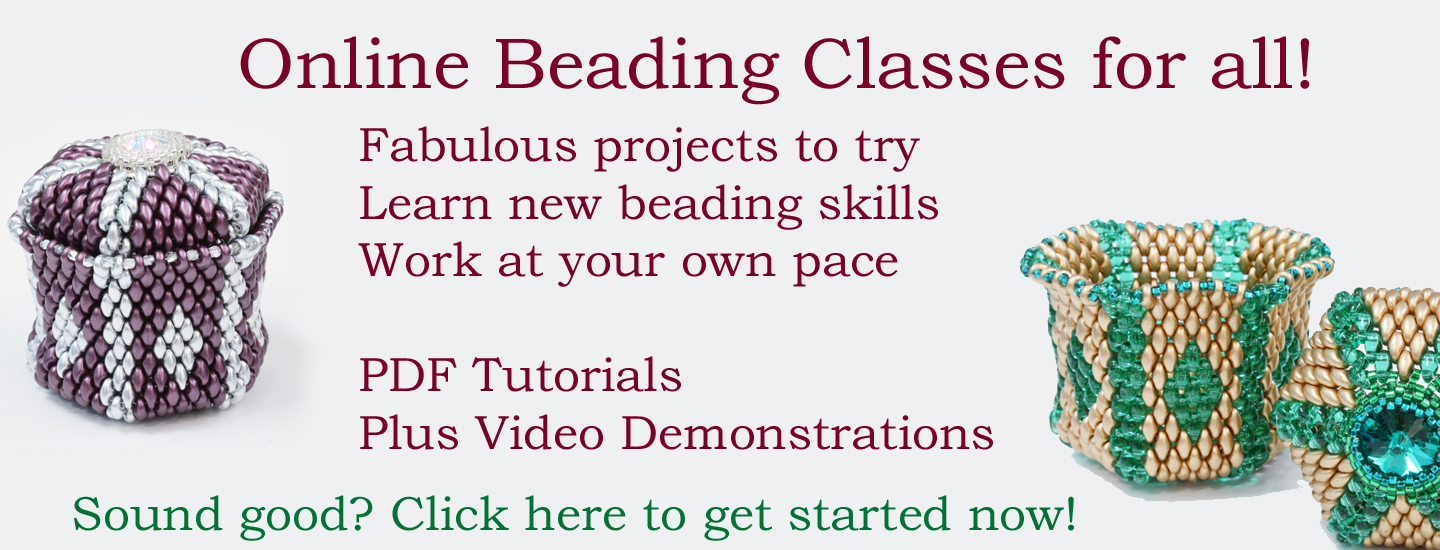
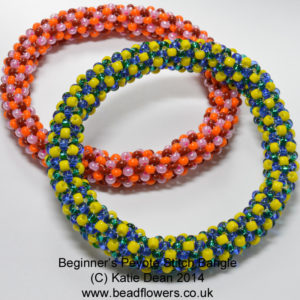
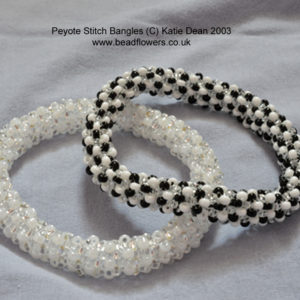
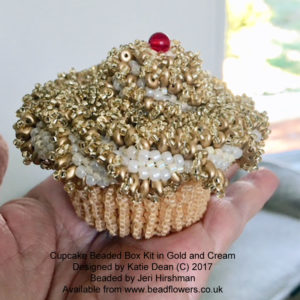
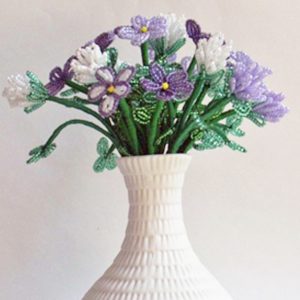
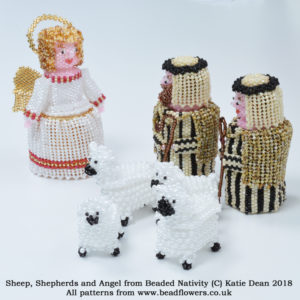

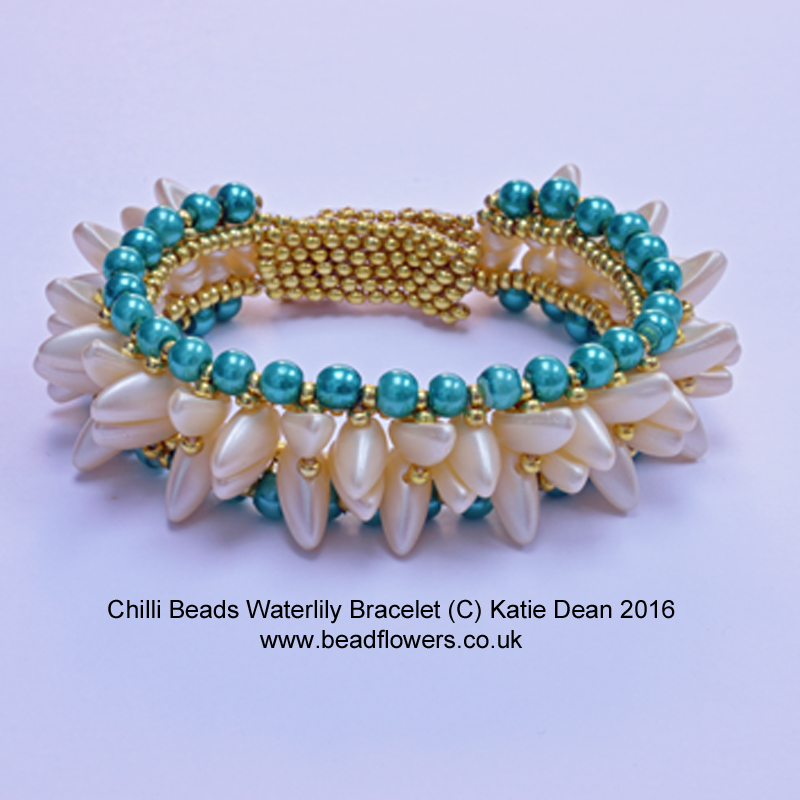

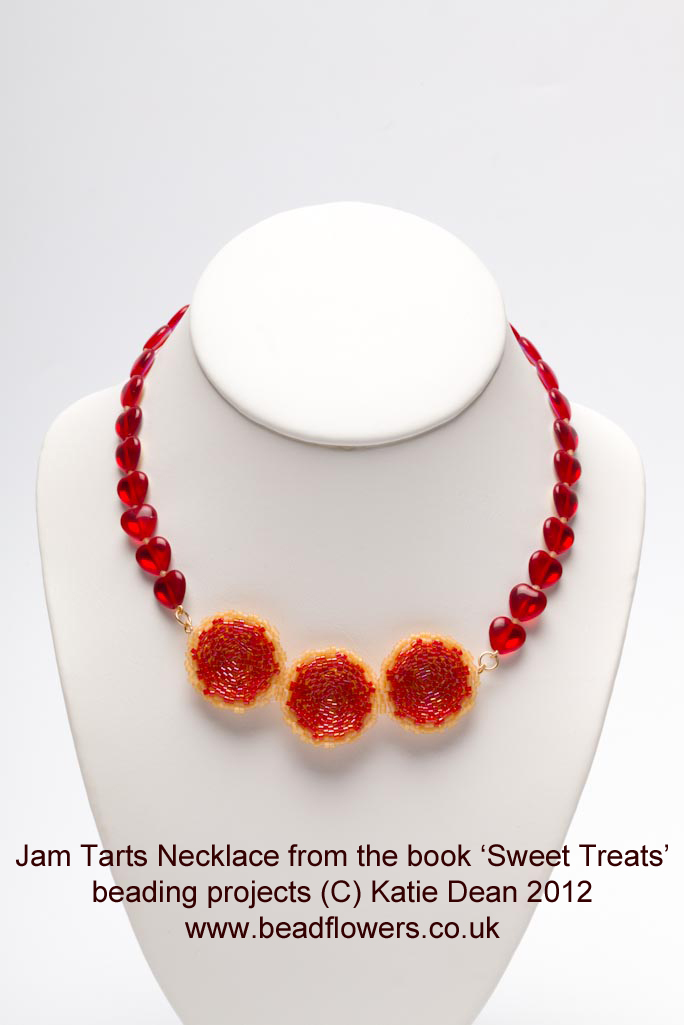






I sold bead kits. I’m not right now because I’m running my late bf’s publishing business. I included everything except pliers for closing jump rings and scissors. Needles were taped to the back of a business card. I included a spool of c-Lon thread because I felt it was superior to nymo. Finding were included.
As far as bead amounts, my bf knew how large manufacturers figured out the amount needed in packages, so he set me up with a spreadsheet to calculate how many grams of beads I would need to only be under the bead count 1 time in 100. Then I added a little bit more.
That sounds brilliant, Joann!